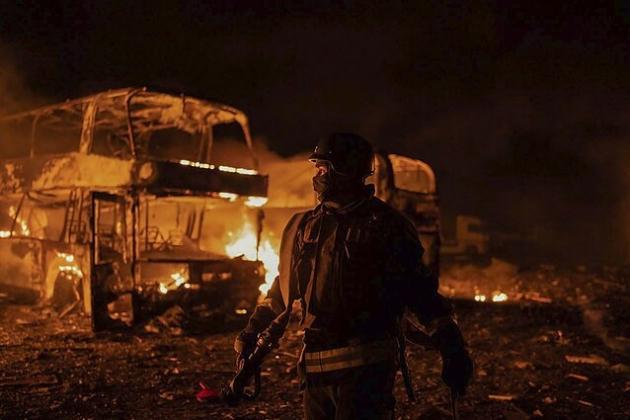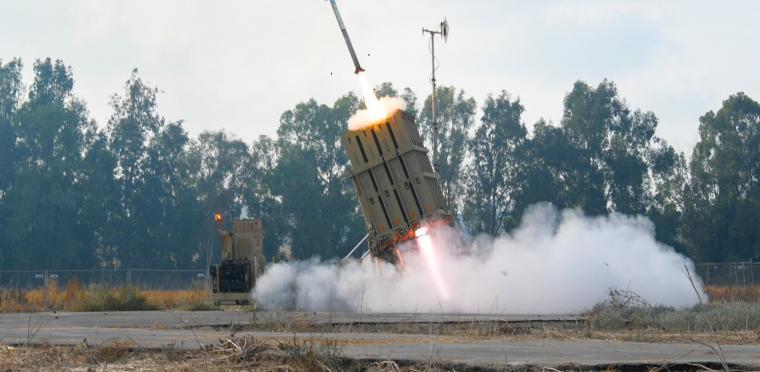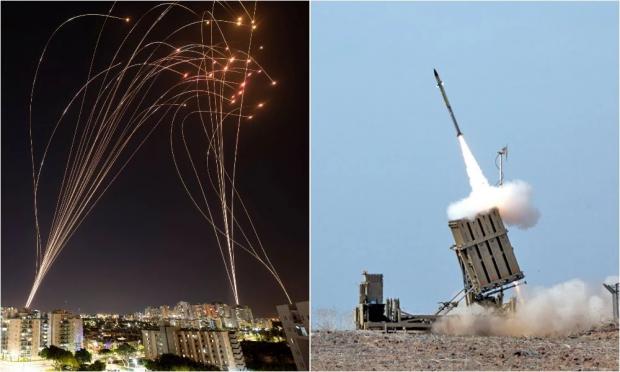In the last week, the air battle on the Russia-Ukraine border has intensified. Just two days ago, four Russian Aerospace Forces (VKS) aircraft (two advanced fighter jets and two helicopters) crashed, apparently shot down over the Bryansk region of Russia.
The increased air threat over Russia's border region is of extreme concern to the Kremlin because it uses the region to project air power in support of the war.
Russia has since prioritized trying to neutralize Ukraine's improved air defense capabilities, but in the process has likely lost several more Kh-47 missiles.
Thus it was decided by the Russian leadership, the army to intensify its strikes in Ukraine and to target the decision-making centers in Kiev, in order to make it difficult - to delay the counterattack of the Armed Forces of Ukraine.

According to CNN, Russia has stepped up its strikes in Ukraine and decided to attack key decision-making centers in Kiev. The purpose of this strategy, according to a US military official, is to "delay" an alleged counterattack by the Armed Forces of Ukraine (AFU).
A CNN military source points out that the Russian military has significantly increased its consumption of kamikaze missiles and drones in recent times. In his opinion, this is intended to confuse the Ukrainian air defenses, which are trying to repel these attacks.
As part of the new tactics, the Russian Armed Forces (RF Armed Forces) carried out larger-scale airstrikes in Ukraine from various directions, including Kiev. Particular emphasis is placed on attacks on decision-making control centers and other important objects.
The intensification of strikes by Russia may indicate a new stage in this conflict, the results of which are currently difficult to predict.

The "Iron Dome" system in Ukraine
According to information made public at a meeting of the Senate Committee, the United States of America is ready to send to the Armed Forces of Ukraine one of the arrays of the missile defense system "Iron Dome" (ABM). This statement was made by the head of the US Army Space and Missile Defense Command (USASMDC), Lt. Gen. Daniel Karbler.
We remind you that the "Iron Dome" system was developed in Israel and became an effective means of protection against missiles and artillery. The US currently has two arrays for this system. One of them is in the process of being upgraded, while the second is ready for operation and is awaiting a request from the Ukrainian side.
This decision caused active debate both within the United States and outside the country. Whether such powerful military equipment should be delivered to Ukraine remains an open question, given that the United States itself is the main funder and recipient of the system. However, independent Senator Angus King stressed that funding the system is standard US practice.

Israeli Prime Minister Benjamin Netanyahu has already mentioned the possibility of transferring the "Iron Dome" missile defense system to Ukraine in the past, but this issue has since "faded" into the background. However, current events show a renewed interest in this topic.
Ukraine has joined NATO's cyber security center
Ukraine announced that, "it will join NATO's Cyber Defense Cooperation Center (CCDCOE)". The Ministry of Foreign Affairs of Ukraine wrote about it on Twitter.
Attached to the post is a photo showing the Ukrainian flag flying next to flags of other European countries near the CCDCOE headquarters in Tallinn, Estonia.
The NATO Cyber Center was established in 2008 to expand "information sharing and cooperation" between alliance members and their partners. In particular, the CCDCOE conducts cyber security exercises and prepares guidelines "for activities in this area".

The Washington Post wrote that NATO countries have decided not to send an invitation to Ukraine to join the North Atlantic Alliance at the summit in Vilnius, which will be held in July.
According to the publication, the Eastern European countries want to see concrete steps for Ukraine to join the alliance, including specific dates. At the same time, the United States and some Western European countries support only small steps in this direction.



